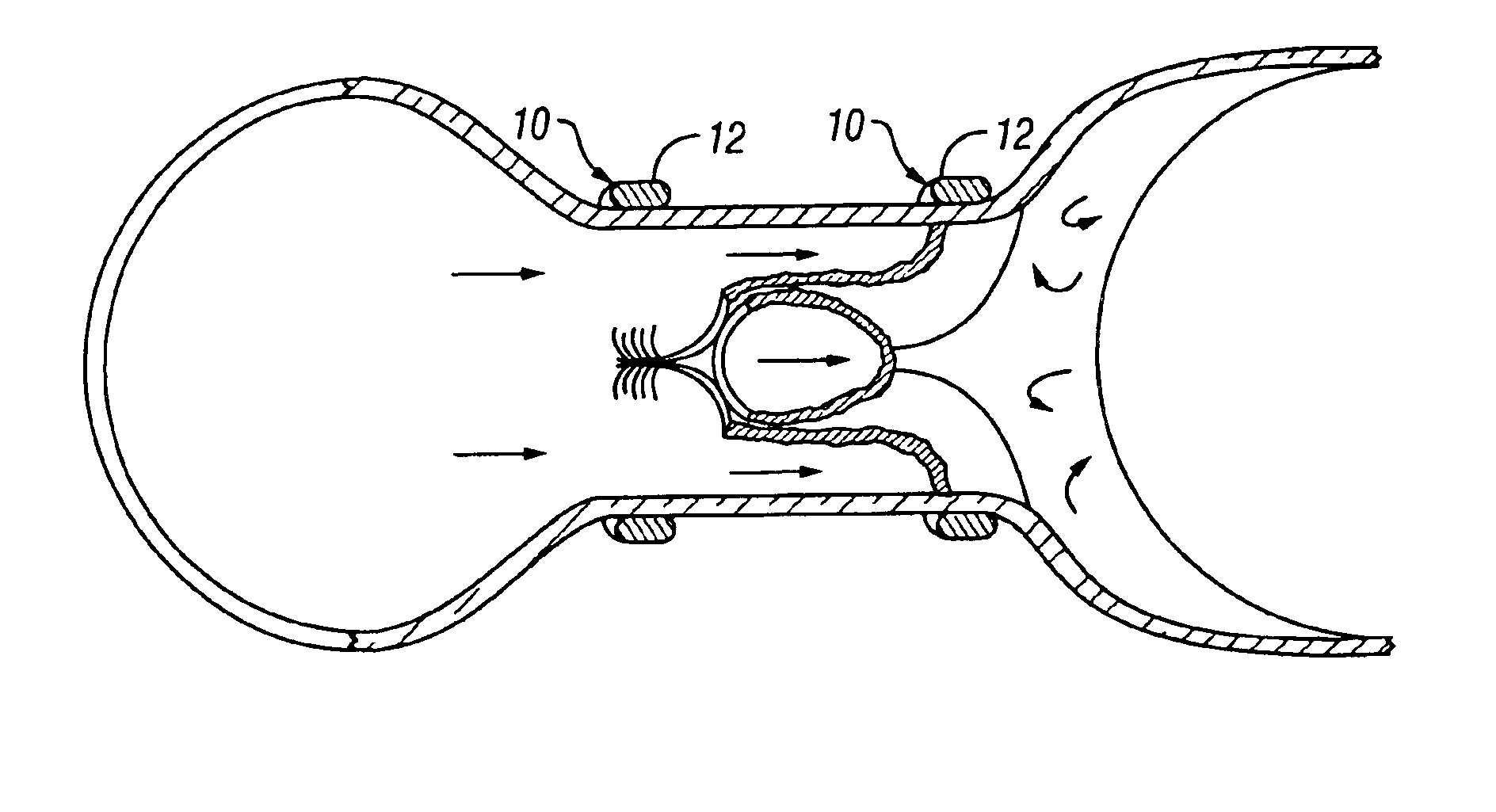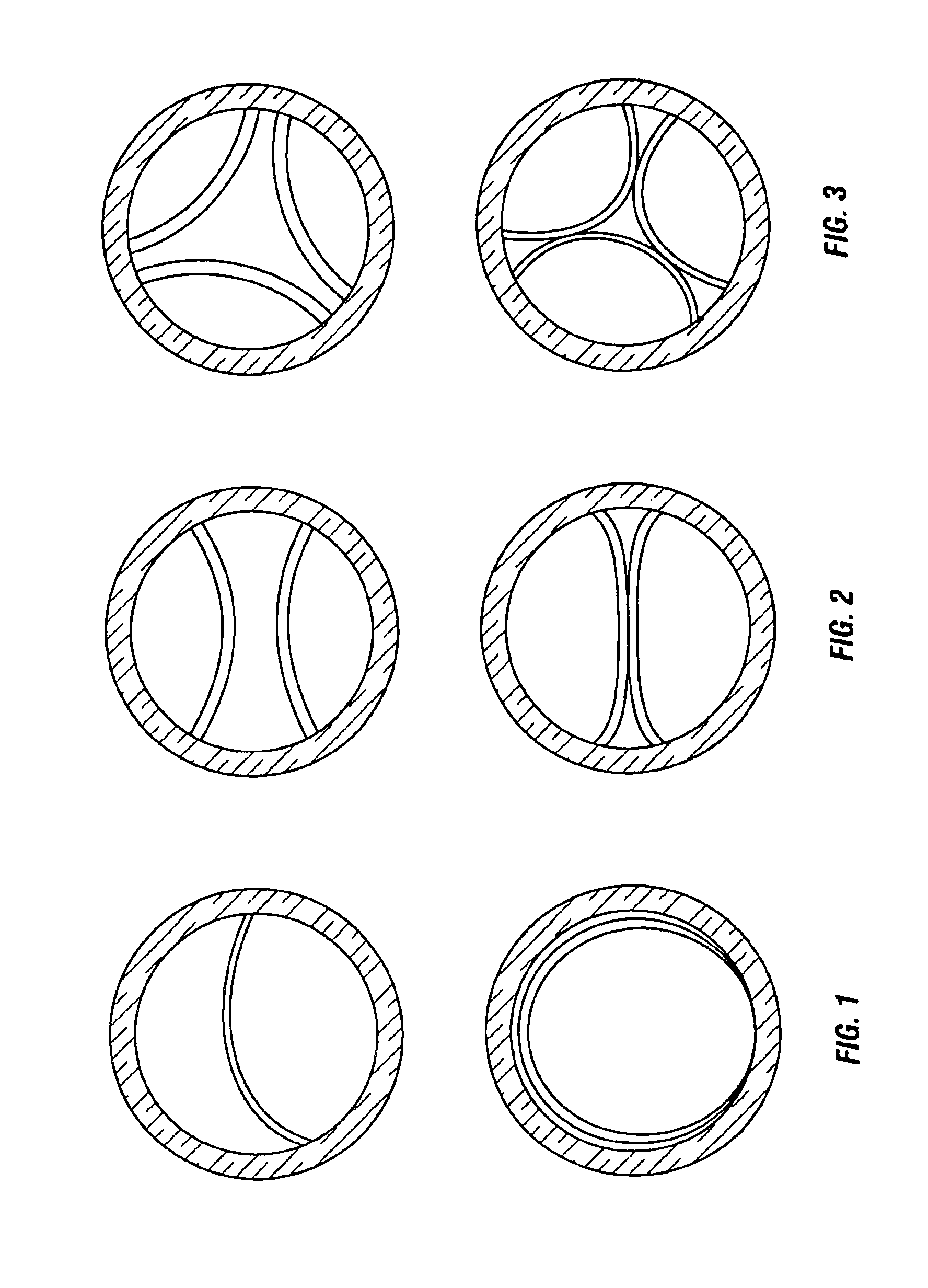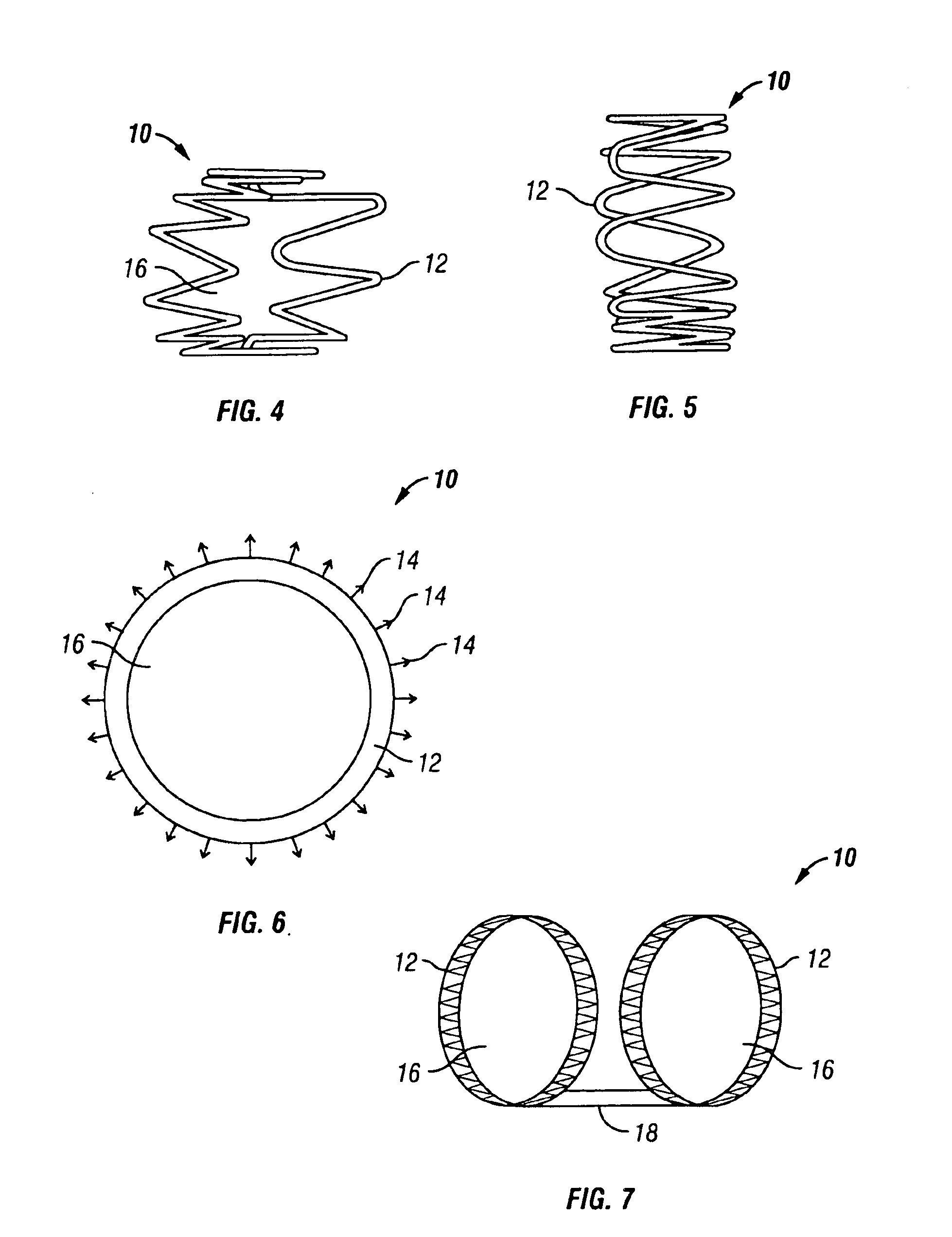Venous valvuloplasty device and method
a venous valve and valve body technology, applied in the direction of prosthesis, surgical staples, blood vessels, etc., can solve the problems of venular dilation, incompetence of the venous valve, adverse medical conditions, etc., and achieve the effect of promoting device longevity and function
- Summary
- Abstract
- Description
- Claims
- Application Information
AI Technical Summary
Benefits of technology
Problems solved by technology
Method used
Image
Examples
Embodiment Construction
[0061]Referring now to the figures, and first to FIGS. 1 through 3, there are shown examples of unicuspid, bicuspid and tricuspid valves which have become so dilated that they have been rendered incompetent. Below each of the dilated valves, a healthy valve is shown for comparative reference.
[0062]FIGS. 4-6 show a device 10 of the present invention, useable to reduce the diameter of a dilated vein such that competence may be restored. Device 10 generally comprises a support structure 12 and a grabbing mechanism 14 (shown only on FIG. 6 for clarity).
[0063]Support structure 12 is shown as a zig-zag patterned spring member curled to form a ring. The zig-zag patterned spring member allows energy to be stored in the bends of the spring when manipulated, and used to return the structure 12 to its original, ring-like configuration when released. One skilled in the art will realize that other structures also acceptably provide such a resilient characteristic. Examples include, but are not l...
PUM
 Login to View More
Login to View More Abstract
Description
Claims
Application Information
 Login to View More
Login to View More - R&D
- Intellectual Property
- Life Sciences
- Materials
- Tech Scout
- Unparalleled Data Quality
- Higher Quality Content
- 60% Fewer Hallucinations
Browse by: Latest US Patents, China's latest patents, Technical Efficacy Thesaurus, Application Domain, Technology Topic, Popular Technical Reports.
© 2025 PatSnap. All rights reserved.Legal|Privacy policy|Modern Slavery Act Transparency Statement|Sitemap|About US| Contact US: help@patsnap.com



